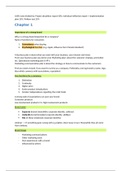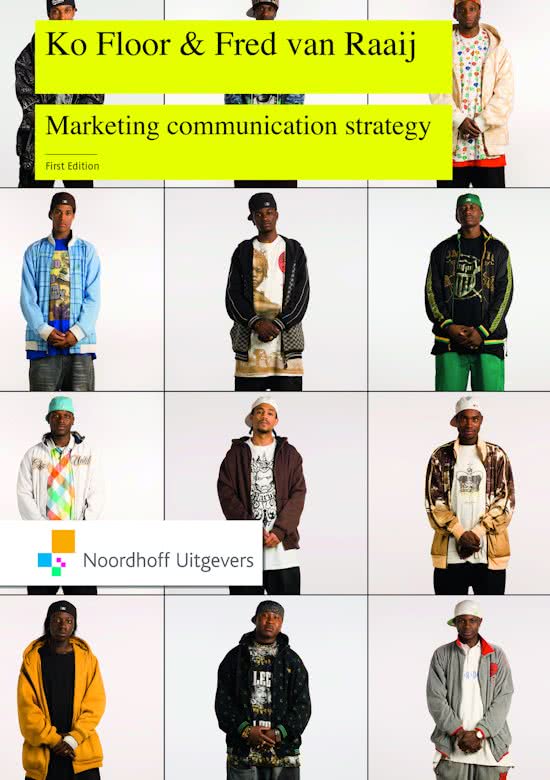100% note divided by: Project decathlon report 50%, Individual refeccon report t implementacon
plan 25%, Writen test 25%
Chapter 1
Importance of a strong brand
Why is a strong brand important for a company?
Name 2 funccons for consumers
1. Convenience when buying
2. Psychological funccon (e.g. Apple, infuence form friends/standard)
A business plan is about what you want with your business, your mission and vision.
From your business plan you derive your Markecng plan; about the customer strategy, promocon
etc. Operaconal markecng plan is 4P'ss.
Markecng-communicacon plan is about the strategy on how to communicate to the customers.
First you need a brand, if you want to survive as a company. Preferably a strong brand (a name, logo,
idea which connects with associacons, reputacon)
Five funccons for a company:
1. Discnccon
2. Concnuity
3. Higher price
4. Easier product introduccons
5. Greater independence regarding the retail trade
A strong web of associacons can save your brand.
Consumer products
Low involvement products V.S. high involvement products
Brand name
Separate brands (monolithic corporate idencty, unilever)
Umbrella brand (branded corporate idencty, phillips)
Mix of these (endorsed corporate idencty)
Unilever --> if something goes wrong with e.g Lipcon, Dove stays in tact. Meanwhile they all come
from Unilever.
Brand image
- Markecng communicacons
- Other markecng tools
- Own experiences with a brand
- Infuenced by others
,How to sell more?
Push strategy (aimed at retailers)
Pull strategy (aimed at customers)
Changes in markecng communicacon: historical development:
Direct contact with customers
Distance and cme challenges disappeared
Communicacon through retails (retailers are disappearing)
Looking for discnccve features (USP)
First direct advercsing campaigns
Large advercsing budgets
More markecng communicacon methods
One-to-one communicacon
Consumer products
- Convenience goods (frequently bought; cheese)
- Preferencal products (frequently bought; beer)
- Shopping goods (durable; fat-screen TV)
- Specialized goods (unique; iPad)
Chapter 2
Communicacon mix
Corporate communicaton
o The organizacon as a whole
o Also called concern communicacon
Marketng communicaton
o The brands, products, services
Corporate communicacon
The mission of the company is the starcng point and subject
, Corporate idencty
Corporate image
Corporate reputacon
Communicacon methods - advercsing, online communicacon, sponsorship etc.
Media - newspaper, internet, personal contact etc.
Corporate design – company vs. Brands
Target groups – vs. Shareholders
Corporate communicacon
Internal communicacon
External communicacon (commercial com & markecng com --> money)
Markecng communicacon
Instruments: brand name, packaging, design, price, distribucon channels.
All the markecng communicacon lead the customer to the selling point (shop) and must have a
follow-up in store
Markecng communicacon mix
Marcom – infuencing behaviour
Thematc marcom (knowledge, attude)
Acton marcom (buying behaviour)
Advercsing, sponsoring, personal selling and direct markecng is long-lastng communicaton.
Events, sales-promocon, in-store communicacon, markecng PR is short-lastng communicaton.
Process of markecng communicacon
1. Marcom strategy of the sender
2. Coding: campaign concept
3. Message in media
4. Decoding: processing by receiver
5. Knowledge, attude
6. Behaviour
Marcom instruments
Advercsing – paid messages in the media.
o Advercsing is informacon in mass media, paid for by an advercser, concerning
brands or organizacons, with the purpose of infuencing the knowledge, attude and
behaviour of target groups in a direccon that benefts the advercser.
PR – systemacc promocon of mutual understanding between organizacons and the public
o Markecng PR has the intencon to infuence buying behaviour (acts at brand level)
Online communicacon
Sponsorship





